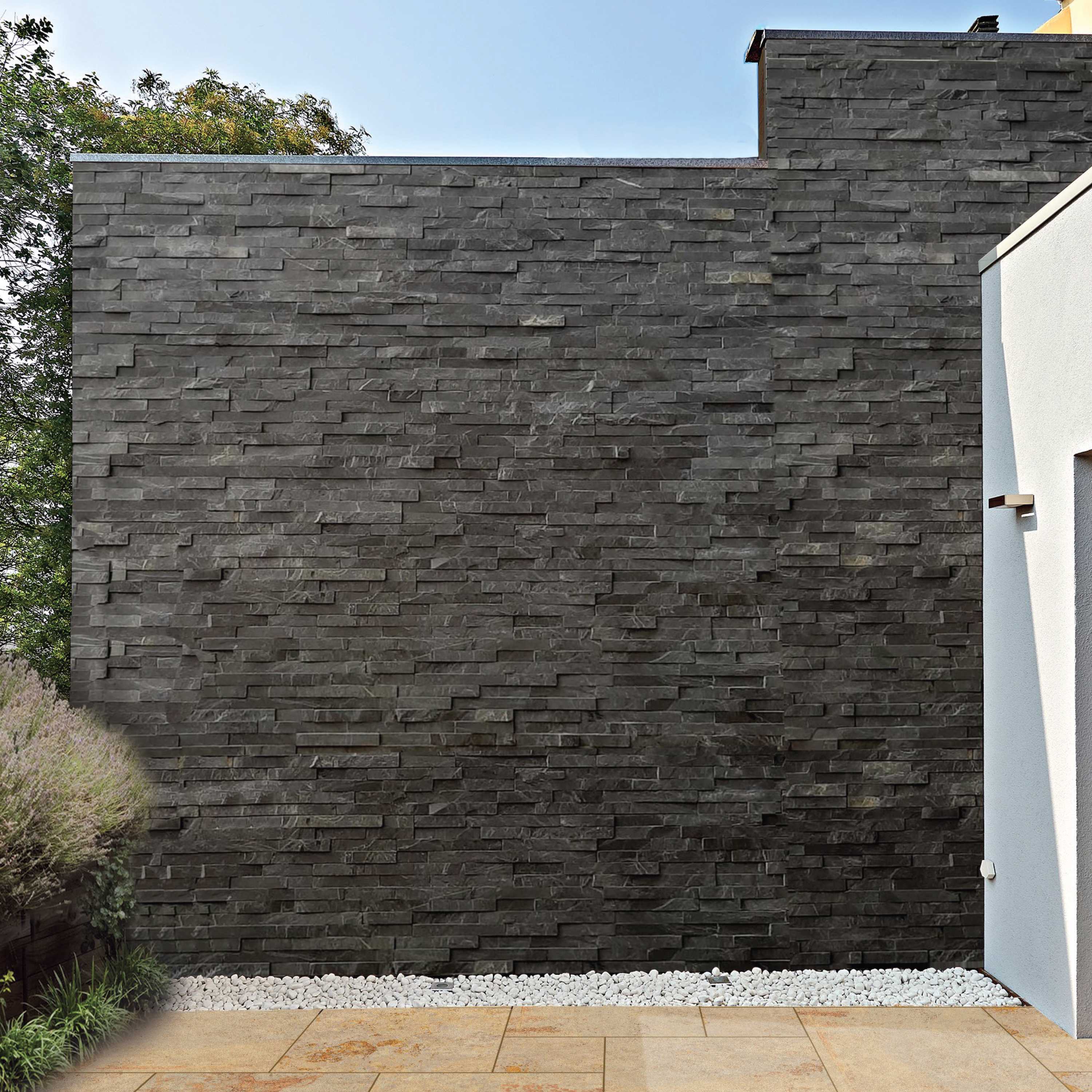A Comprehensive Guide to Different Types of Cladding for Houses
Apr 13, 2023
Exterior wall cladding has become quite popular over the past few years because of the luxuriousness it offers to the house. Many homeowners, designers and architects prefer to install wall cladding for the exterior part of the house. These external wall coverings are made from a variety of materials and we’ll explore these different types of cladding for houses in this article below.
You can choose any exterior wall cladding material that matches your style, taste, overall house design and budget.
1. Natural Stone Wall Cladding
Natural stone is one of the most durable and preferred types of cladding for houses. The usage of thin layers of natural stones is used in this style of wall cladding. Stone exterior wall cladding adds a natural elegance and character to your building that sets it apart from other types of cladding. Landscape gardens frequently have stone cladding.
Slate, marble, and sandstone are a few of the most common types of natural stones used for wall cladding.
As it improves the structural integrity of the building, the stone is generally utilised in cubic structures. However, years of innovation have improved the stone cladding alternatives that are currently accessible. Stone may now be cut, polished, and coated in ways that were not before feasible because of newer technologies and equipment.
2. Wood Cladding
Consider installing wood cladding to give your outdoor area a more natural appearance. It provides your house with a warm, quaint appearance. Timber cladding is a very adaptable substance that gives building owners the chance to design eye-catching facades for projects that don’t need a fire rating.
This sustainable cladding material offers an excellent option for many design projects because it is responsibly sourced and durable over a long time.
The best part about wood cladding is that they are easy to work with and are an easy DIY project. You can also install wooden wall cladding in different directions be it vertically, horizontally or diagonally. It depends on your style and taste.
3. Metal Cladding
Metal cladding is another popular type of cladding for houses. Metal cladding is also among the best and most creative porch decorating ideas to spruce up your outdoor space.
Commercial and agricultural buildings can be seen with metal cladding materials, which provide an easy-to-clean surface that symbolises the industry it represents. Industrial structures are frequently covered with metal cladding, which offers strong exterior cladding.
With many other colours and finishes available, steel and aluminium are common metal options that produce a grey sheen on the exterior. Due to its non-combustible nature, metal cladding can offer additional fire safety. The most popular material for this is aluminium.
4. Brick Cladding
Bricks are a common type of cladding and serve as a terrific and distinctive envelope for buildings. Brick wall cladding is a popular choice because it complements any building well. You can choose a design that complements your building and surroundings from the various colours of bricks that are available.
Brick slip cladding can be the ideal choice for your construction project. This material is a viable alternative to traditional bricks due to its realistic brick-like appearance and feels as well as some additional advantages, such as greater durability or water resistance in some waterproofing applications.
5. Porcelain Tile Cladding
For homes seeking to stand out and improve curb appeal, a tile is a popular option. Insulation and weather resistance are provided by tile covering. Tile cladding panels are popular for external walls as well as interior uses.
Porcelain tiles can be customised to make a variety of patterns or just one continuous pattern throughout a structure. This form of cladding can be used in a wide range of imaginative applications thanks to its assortment of colours and finishes.
6. Glass Cladding
Glass cladding might not be among the popular exterior cladding options among many homeowners. But they are certainly among the first choice of materials for commercial buildings.
Glass cladding requires yearly washing and takes little upkeep. Glass cladding is a common option for a large building because it is weather-resistant and doesn’t distort or alter shape over time. Lightweight panels make it simple to place glass cladding on support battens and create bespoke shapes.
7. Concrete Cladding
For the exterior of your home, concrete wall cladding is a great option if you prefer the industrial style. There are numerous uses for these panels. Along with offering structural advantages, concrete cladding is a fantastic method to include sculptured shapes in your exterior cladding design project. You can also incorporate different front garden wall ideas to make the most of your outdoor area.
8. uPVC (Unplasticised Polyvinyl Compound) Cladding
Cladding that is inexpensive, easy to install, and fast to fix when necessary. cladding that can be applied swiftly and uniformly, which is frequently seen in vacation homes and rentals.
Unplasticised Polyvinyl Compound, or uPVC, is one of the most affordable external cladding options available and is becoming increasingly popular because of its wide variety of colours and lightweight characteristics. Over the course of its lifetime, uPVC cladding requires very little maintenance. Once fitted, all that is typically required is a straightforward wash in warm water.
Conclusion
These all are among the most popular and best types of cladding for houses. You should select the cladding material that matches your overall house design, taste and budget.


